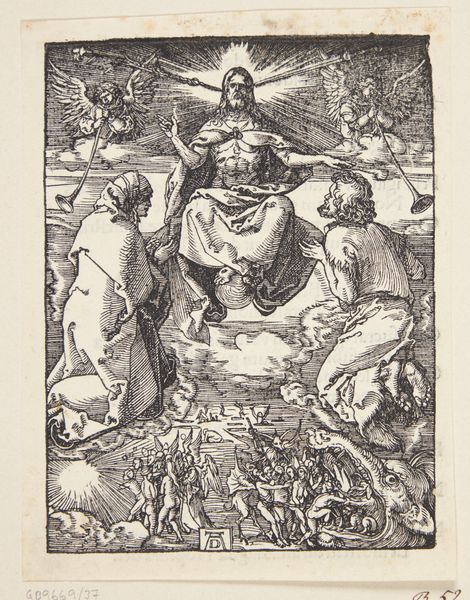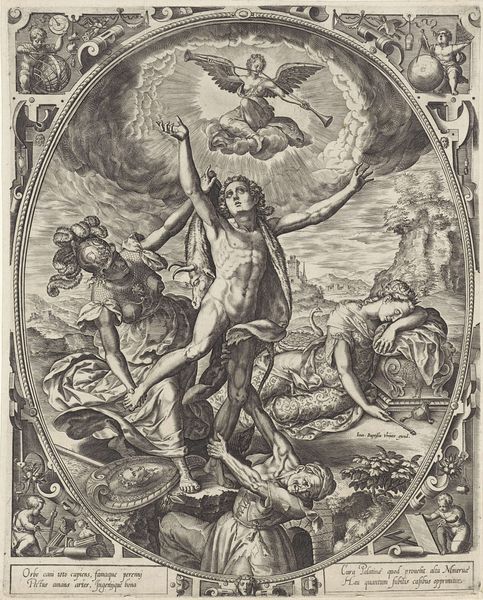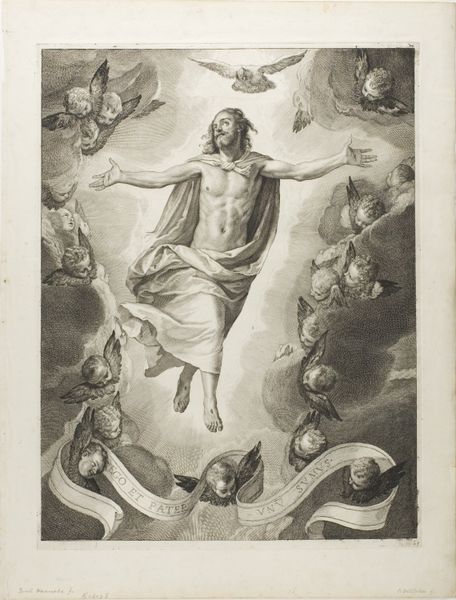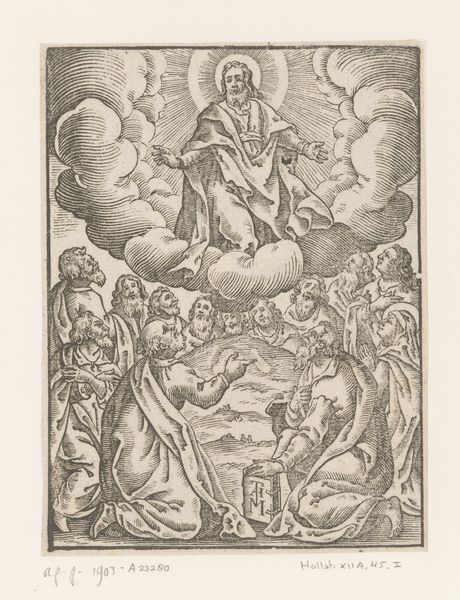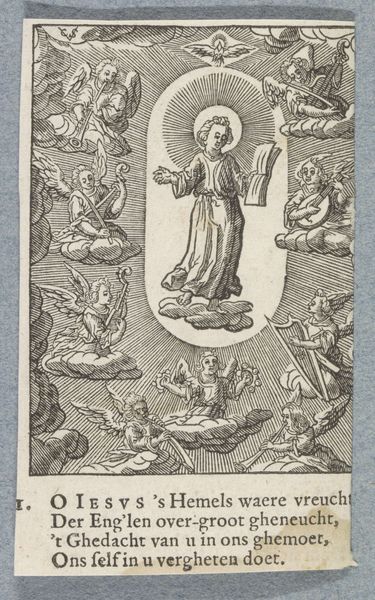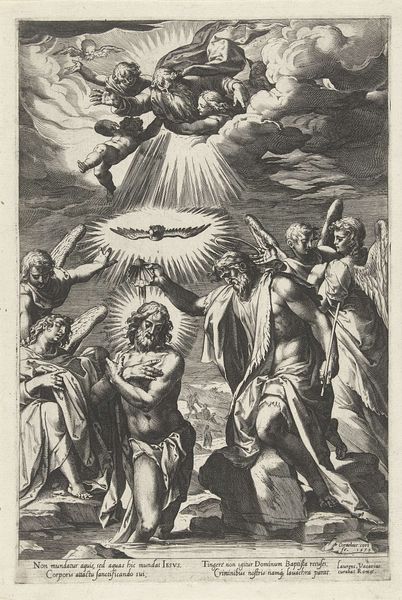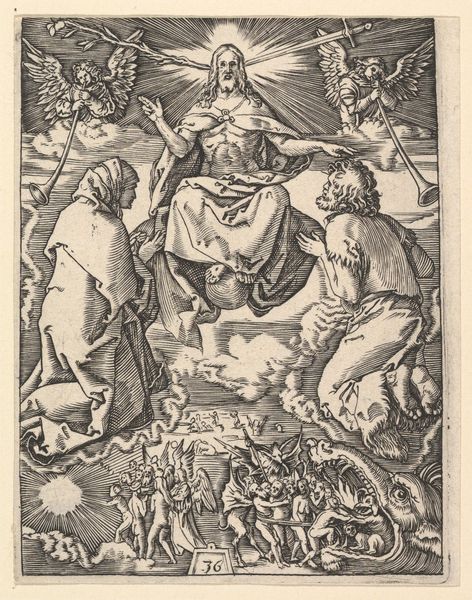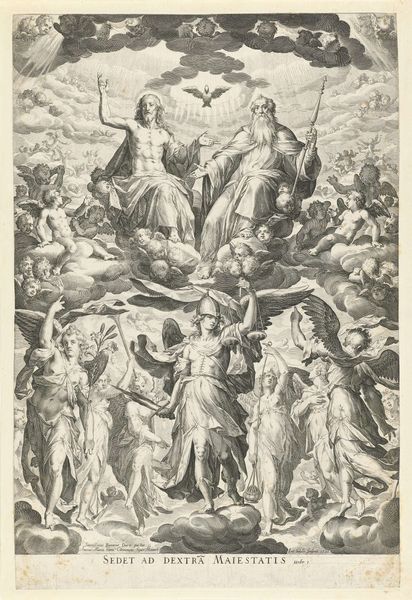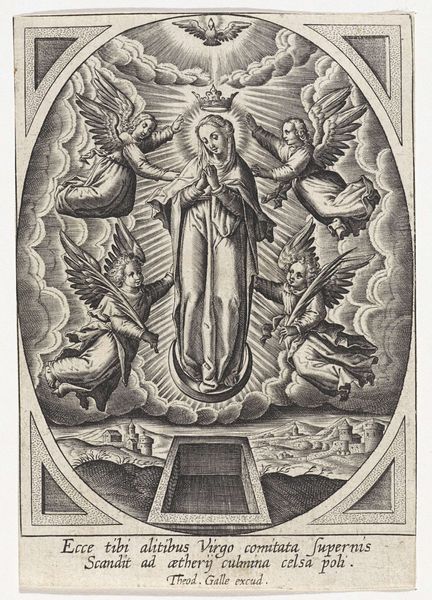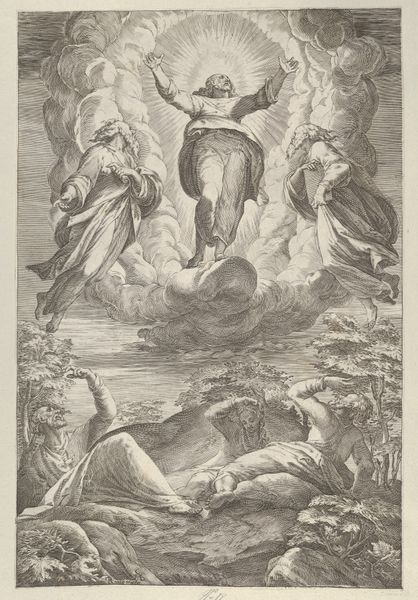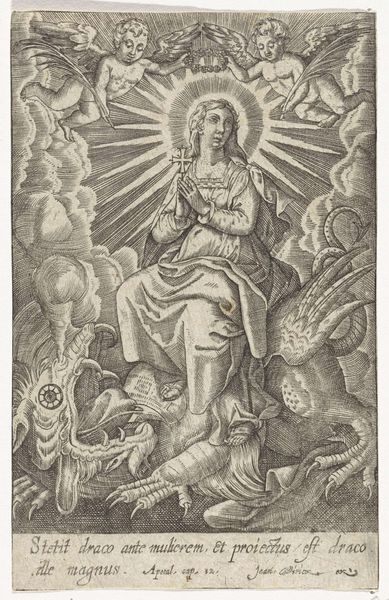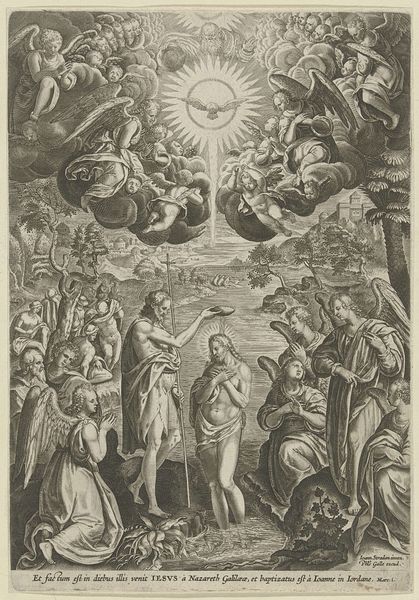
Dimensions: height 288 mm, width 205 mm
Copyright: Rijks Museum: Open Domain
Editor: Here we have Hieronymus Cock’s 1563 engraving, "The Ascension of Mary Magdalene," currently held at the Rijksmuseum. There’s something really striking about the almost theatrical way Magdalene is lifted up by the angels. How would you interpret this work? Curator: This piece, while depicting a religious scene, speaks volumes about the evolving role of women, and specifically Magdalene, within the religious and social structures of 16th-century Europe. Look at how her sexuality is both present and sublimated. Do you notice it? Editor: I do – her hair is long and flowing, almost sensuous, yet she's also presented with such reverence, surrounded by angels. It’s quite a contrast. Curator: Precisely! This engraving exists within a specific historical context where female figures were often either idealized as purely virginal or demonized as temptresses. The depiction of Magdalene attempts to navigate this complex, patriarchal landscape. Notice that her ascension isn’t about her dissolving into pure spirituality; instead, her earthly body is actively translated into the heavens. What does this suggest to you about how feminine spirituality was seen? Editor: That it was something to be transformed, perhaps? Made acceptable for the divine realm? Curator: Exactly. Her "flaws" or worldly nature needed to be cleansed, transcended by angelic guidance, a concept still seen nowadays in many interpretations of spirituality as liberation. Editor: That's a perspective I hadn't considered. I came to the artwork seeing a woman bathed in holy light, lifted by holy servants and that was that. Now it prompts new considerations on its presentation. Curator: It's a powerful piece, indeed, laden with the intricacies of a patriarchal society wrestling with female spirituality and agency. Thank you for guiding the discussion.
Comments
No comments
Be the first to comment and join the conversation on the ultimate creative platform.
